Imagine navigating the intricate waters of the stock market is like sailing through a sea of uncertainty. To help steer your trading ship towards profitable shores, mastering the art of utilizing Bollinger Bands is crucial.
These seven strategies will serve as your compass in the vast trading ocean, guiding you towards successful trades. Each strategy holds the potential to enhance your trading skills and elevate your profitability.
Bollinger Bands Basics
In trading, understanding the fundamental concept of Bollinger Bands is crucial for effectively analyzing market volatility and potential price movements.
Bollinger Bands consist of three bands: the upper band, the middle band (20-day SMA), and the lower band. The upper band signifies overbought conditions, while the lower band indicates oversold conditions.
Traders use Bollinger Bands to identify volatility and potential price reversals. These bands expand during high volatility periods and contract during low volatility phases.
Bollinger Bands Strategy Overview
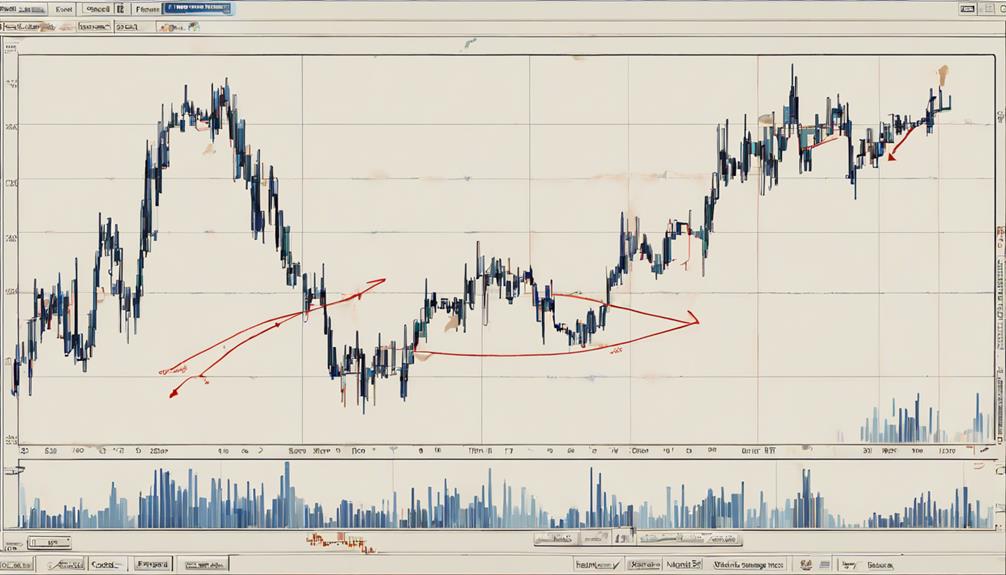
Transitioning from understanding the fundamental concept of Bollinger Bands, let's now delve into the practical application with a focused Bollinger Bands Strategy Overview.
- Utilize Bollinger Bands as a trading strategy: Incorporate Bollinger Bands into your technical analysis toolkit for assessing market conditions.
- Identify overbought and oversold levels: Use the bands to spot potential reversal points based on price action.
- Generate trading signals: Look for price action near the bands to signal potential buy or sell opportunities.
- Implement stop-loss orders based on volatility: Adjust stop-loss levels according to the bands' expansion or contraction to manage risk effectively.
Bollinger Bands for Swing Trading
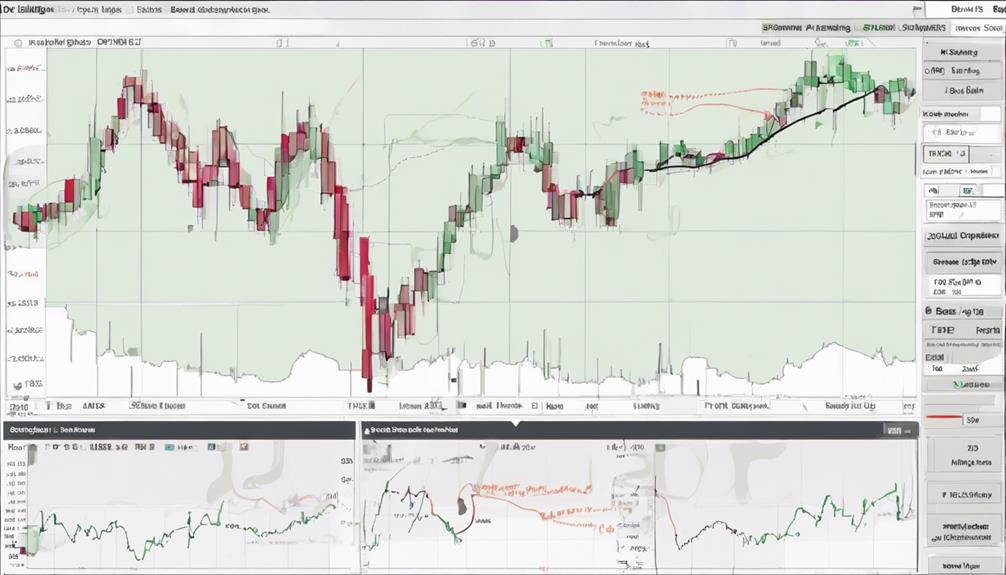
When swing trading with Bollinger Bands, you focus on capturing potential swings by observing price action near the outer bands. By utilizing these bands, you can identify overbought and oversold conditions, aiding in making strategic trade decisions.
Setting precise entry and exit levels based on price movements around the bands is crucial for maximizing profitability in swing trading with Bollinger Bands.
Swing Trading Basics
Swing traders can effectively utilize Bollinger Bands to pinpoint short to medium-term price movements within trending markets.
When swing trading with Bollinger Bands, you can benefit from identifying overbought and oversold conditions, anticipating price breakouts through band squeezes, and using entry points based on interactions with the outer bands.
This strategy allows traders to capitalize on the price swings within a trend, maximizing profit potential.
Bollinger Bands Application
Utilizing Bollinger Bands in swing trading allows traders to pinpoint potential reversal points and entry opportunities based on price volatility, enhancing their ability to capture profitable price swings. Bollinger Bands serve as valuable tools for identifying trend changes, as price touching or breaking the outer bands can signal shifts in market direction.
When employing Bollinger Bands for swing trading, traders often combine them with other technical indicators to validate trade signals and refine their trading strategies. By understanding how to interpret Bollinger Bands effectively within the context of swing trading, traders can improve profitability and enhance risk management practices.
Integrating Bollinger Bands into swing trading strategies provides a structured approach to navigating market fluctuations and seizing opportunities in various market conditions.
Setting Entry and Exit
To optimize your swing trading strategy with Bollinger Bands, consider setting precise entry and exit points based on price movements relative to the bands. When utilizing Bollinger Bands for swing trading, keep in mind the following strategies:
- Entry Points: Look for price touching or crossing the outer bands.
- Exit Strategies: Sell when the price reaches the opposite band or shows signs of reversing.
- Trend Reversals: Bollinger Bands help identify potential reversals and breakouts.
- Stop-Loss and Take Profit: Set stop-loss orders and take profit targets based on volatility levels within the bands.
Using these methods, you can effectively capture price movements within the range defined by the Bollinger Bands.
Bollinger Bands for Day Trading
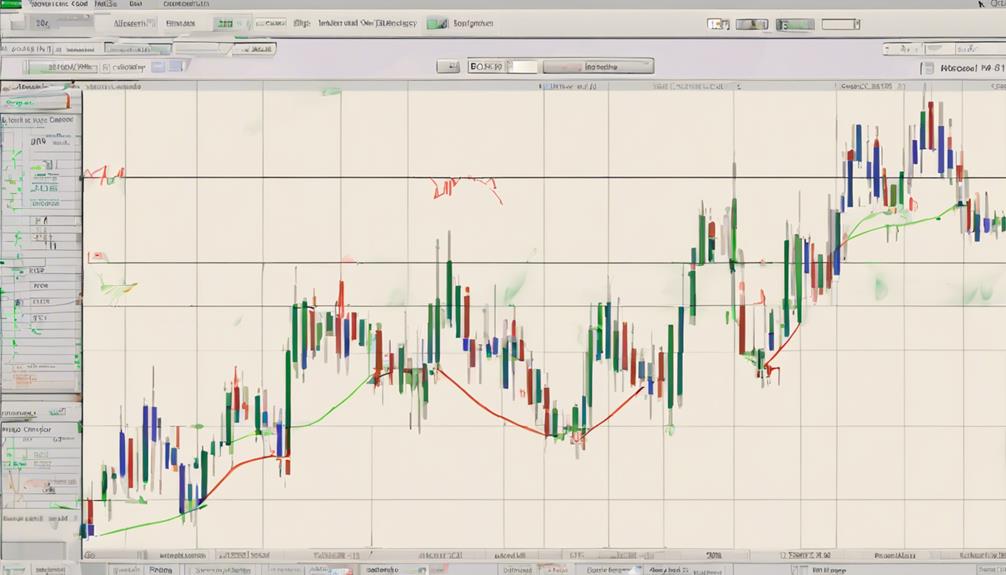
When day trading, incorporating Bollinger Bands can assist in identifying overbought and oversold conditions in intraday price movements. Day traders often rely on Bollinger Bands to pinpoint potential entry and exit points for their short-term trades, especially benefiting from the Bollinger Bands Bounce strategy to capture price reversals.
Adjusting the Bollinger Bands settings for day trading, like utilizing lower periods such as 9, can amplify precision in volatile markets. Double Bollinger Bands are also valuable for day traders engaged in intraday trading, helping to filter out unwanted noise and concentrate on robust trends.
Utilizing these strategies efficiently can enhance your day trading performance and decision-making process.
Double Bollinger Band Approach
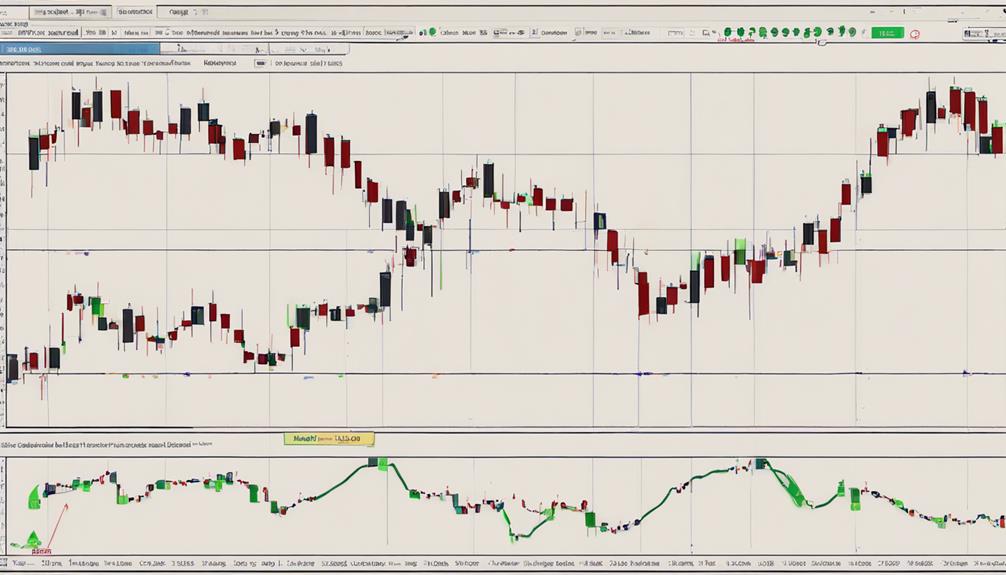
The Double Bollinger Band approach enhances trading precision by utilizing two sets of Bollinger Bands to identify optimal entry and exit points with greater accuracy.
- The inner set, with a shorter period typically around 9, provides more sensitive signals.
- The outer set, using a longer period usually 20, offers confirmation of trends and price movements.
Traders can identify potential trading zones by observing the interaction between the inner and outer bands. This method assists traders in filtering out noise and focusing on strong trends, leading to more profitable trading opportunities.
Bollinger Bands Trading Rules
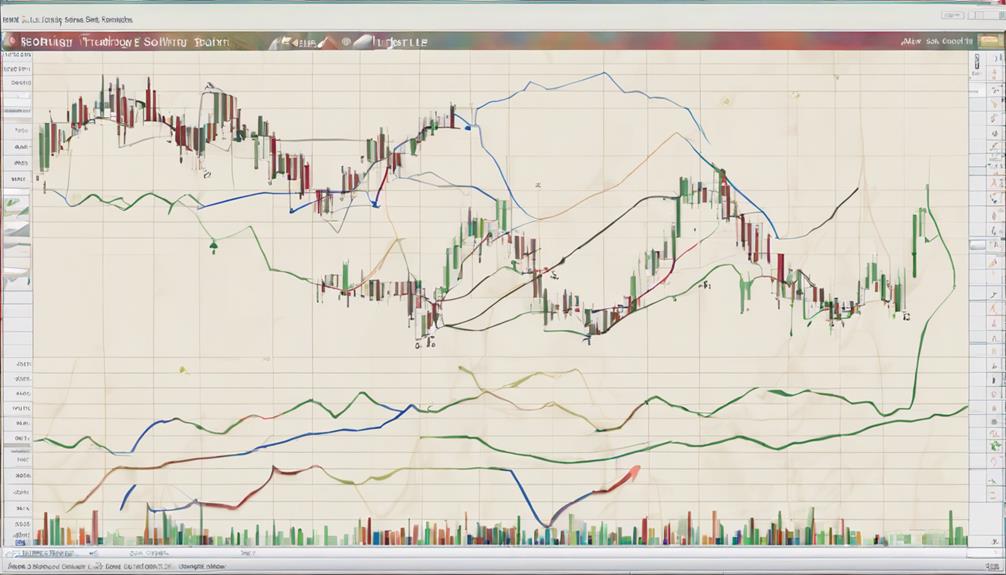
When utilizing Bollinger Bands for trading, it's crucial to focus on:
- Entry signals identification
- Setting appropriate stop-loss levels
- Devising effective profit-taking strategies
By pinpointing entry signals accurately, you increase the likelihood of profitable trades. Establishing stop-loss levels helps manage risk, while having a clear profit-taking plan ensures you capitalize on favorable market movements.
This structured approach enhances your trading strategy and improves overall performance.
Entry Signals Identification
For optimal trading efficiency with Bollinger Bands, precise entry signal identification plays a critical role in navigating market trends and maximizing profitability. When identifying entry signals using Bollinger Bands, traders often look for the price to break above the upper band or below the lower band.
To strengthen these signals, traders seek confirmation from candlestick patterns or volume spikes. Incorporating multiple time frames can help confirm entry signals for more accurate decisions.
Additionally, combining Bollinger Bands with technical indicators such as MACD or Stochastic Oscillator can further enhance entry signal identification. It's crucial to consider market trends, volatility levels, and price action confirmation for effective trading decisions.
Setting Stop-Loss Levels
To optimize your risk management strategy in Bollinger Bands trading, establishing precise stop-loss levels is essential for safeguarding your capital and maintaining disciplined trading practices.
Setting stop-loss levels outside the opposite band of your entry point helps manage risk by defining the maximum loss you're willing to accept on a trade.
Utilizing Bollinger Bands as a guide, determine stop-loss levels based on the market's price fluctuations and volatility. These levels act as a protective mechanism, ensuring capital protection and preventing emotional decision-making during market fluctuations.
Profit-Taking Strategies
Implementing profit-taking strategies in Bollinger Bands trading involves strategically selling when the price reaches the upper band to capitalize on potential gains. To optimize trading outcomes, consider setting profit targets based on historical price movements within the Bollinger Bands.
Use the middle band as a reference point for taking profits during a trade. Secure profits by implementing trailing stop orders along with Bollinger Bands.
Enhance profitability with Bollinger Bands by utilizing a combination of profit-taking strategies such as scaling out positions and analyzing multiple time frames. By incorporating these techniques, you can make informed decisions on when to take profits and ultimately improve your trading results.
What are the Most Effective Strategies for Profitable Trading With Bollinger Bands?
When it comes to effective Bollinger Bands trading, it’s crucial to use a combination of strategies to maximize profits. This can include using multiple time frames for analysis, identifying key support and resistance levels, and implementing strict risk management techniques. Additionally, keeping a keen eye on market trends and news can help inform your trading decisions.
Are the Strategies for Profitable Trading With Bollinger Bands applicable to Commodity Trading as well?
Yes, the strategies for profitable trading with Bollinger Bands can also be applied to commodity trading. By using effective commodity trading with Bollinger Bands, traders can analyze price movements and identify potential entry and exit points to maximize profits in the commodity market.
Bollinger Bands Settings FAQs
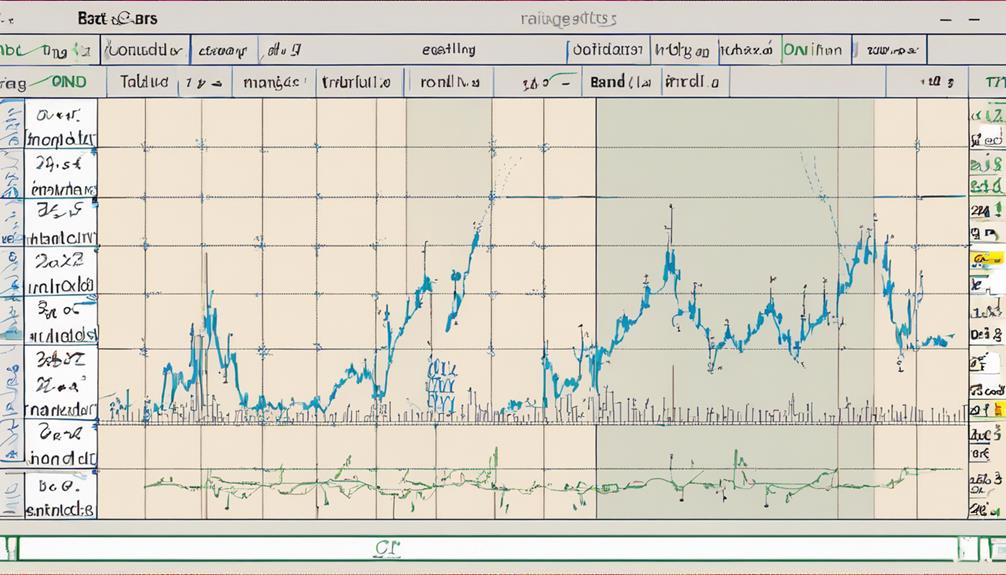
Exploring the optimal adjustments for Bollinger Bands settings can enhance trading precision and adaptability to market dynamics. While the standard settings of 20 periods for the Simple Moving Average and 2 standard deviations are commonly used, traders can customize these parameters to suit their strategies.
For scalping strategies, shorter periods like 9 periods and tighter standard deviations of 2 are often preferred for quicker trade executions. Different time frames may necessitate varying settings, with shorter time frames such as 1-minute charts benefiting from adjustments to capture rapid price movements effectively.
It's crucial to consider market conditions, trading goals, and the desired sensitivity to price fluctuations when determining the ideal Bollinger Bands settings for your trading approach.
Frequently Asked Questions
What Is the Best Strategy for the Bollinger Band?
When trading with Bollinger Bands, the best strategy involves identifying price breakouts or breakdowns for profitable outcomes. Combining indicators like RSI or MACD can enhance accuracy. Manage risk by setting stop-loss and take-profit levels effectively.
Is Bollinger Band Strategy Profitable?
Yes, the Bollinger Band strategy can be profitable. By adhering to defined entry and exit rules, managing risks, and combining indicators, traders have found success. Discipline and strategy alignment are crucial for profitability.
What Is the Best Indicator to Combine With Bollinger Bands?
For the best indicator to pair with Bollinger Bands, consider integrating the Relative Strength Index (RSI). By combining RSI with Bollinger Bands, you can gain valuable insights into market conditions and enhance your trading strategies.
What Is the Most Accurate Setting for Bollinger Bands?
For the most accurate setting with Bollinger Bands, stick to the default 20-period SMA with 2 standard deviations. This configuration captures 95% of price action, helping you gauge volatility effectively on various time frames.
Conclusion
In conclusion, mastering Bollinger Bands strategies can lead to profitable trading opportunities.
Just like a skilled musician who tunes their instrument to create beautiful melodies, traders can fine-tune their Bollinger Bands settings to capture market trends and maximize profits.
By understanding the basics, implementing effective strategies, and continuously adjusting to market conditions, traders can navigate the volatility of the financial markets with confidence and precision.
